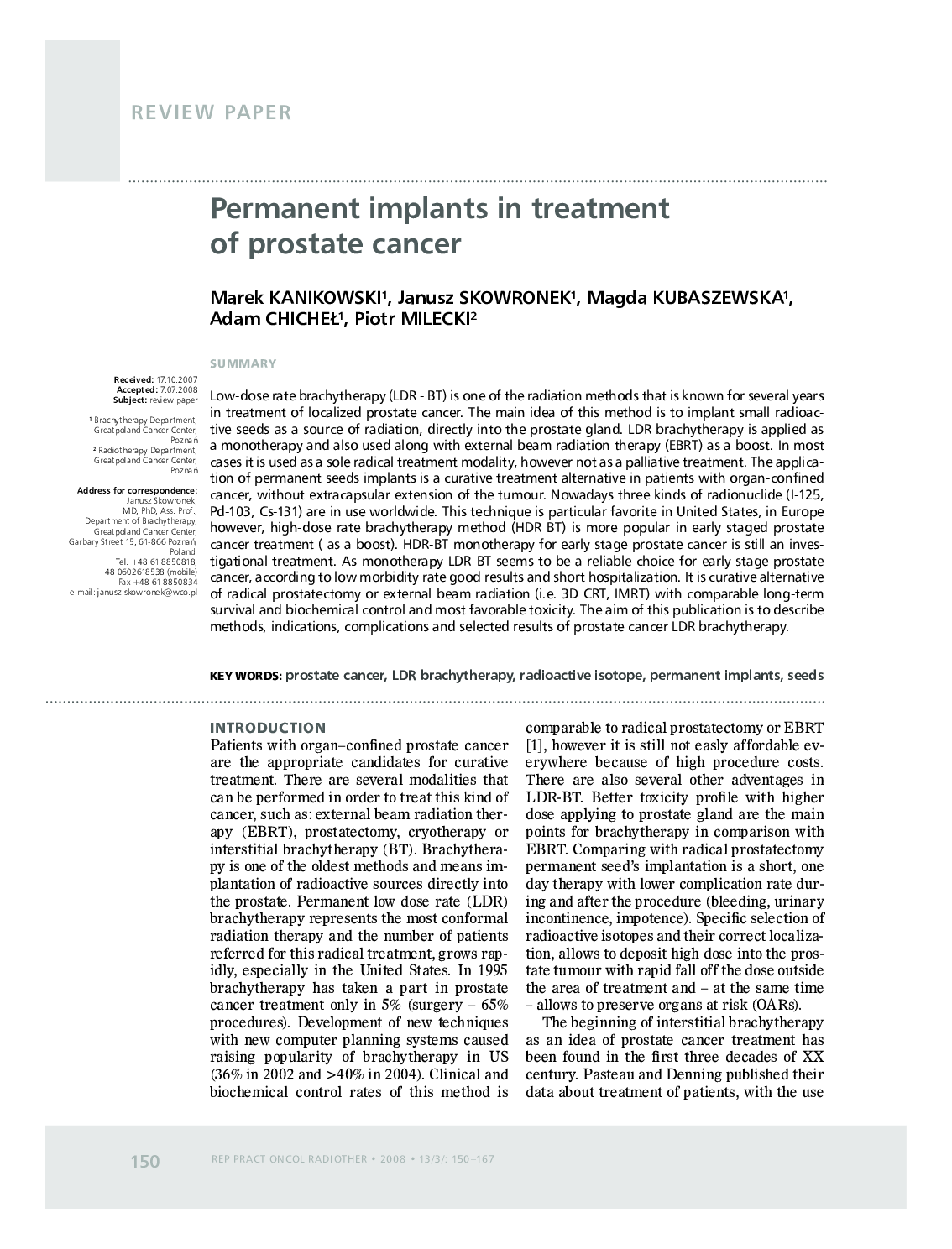| Article ID | Journal | Published Year | Pages | File Type |
|---|---|---|---|---|
| 1857199 | Reports of Practical Oncology & Radiotherapy | 2008 | 18 Pages |
Abstract
Low-dose rate brachytherapy (LDR - BT) is one of the radiation methods that is known for several years in treatment of localized prostate cancer. The main idea of this method is to implant small radioactive seeds as a source of radiation, directly into the prostate gland. LDR brachytherapy is applied as a monotherapy and also used along with external beam radiation therapy (EBRT) as a boost. In most cases it is used as a sole radical treatment modality, however not as a palliative treatment. The application of permanent seeds implants is a curative treatment alternative in patients with organ-confined cancer, without extracapsular extension of the tumour. Nowadays three kinds of radionuclide (I-125, Pd-103, Cs-131) are in use worldwide. This technique is particular favorite in United States, in Europe however, high-dose rate brachytherapy method (HDR BT) is more popular in early staged prostate cancer treatment (as a boost). HDR-BT monotherapy for early stage prostate cancer is still an investigational treatment. As monotherapy LDR-BT seems to be a reliable choice for early stage prostate cancer, according to low morbidity rate good results and short hospitalization. It is curative alternative of radical prostatectomy or external beam radiation (i.e. 3D CRT, IMRT) with comparable long-term survival and biochemical control and most favorable toxicity. The aim of this publication is to describe methods, indications, complications and selected results of prostate cancer LDR brachytherapy.
Related Topics
Physical Sciences and Engineering
Physics and Astronomy
Nuclear and High Energy Physics
Authors
Marek KANIKOWSKI, Janusz SKOWRONEK, Magda KUBASZEWSKA, Adam CHICHEÅ, Piotr MILECKI,
